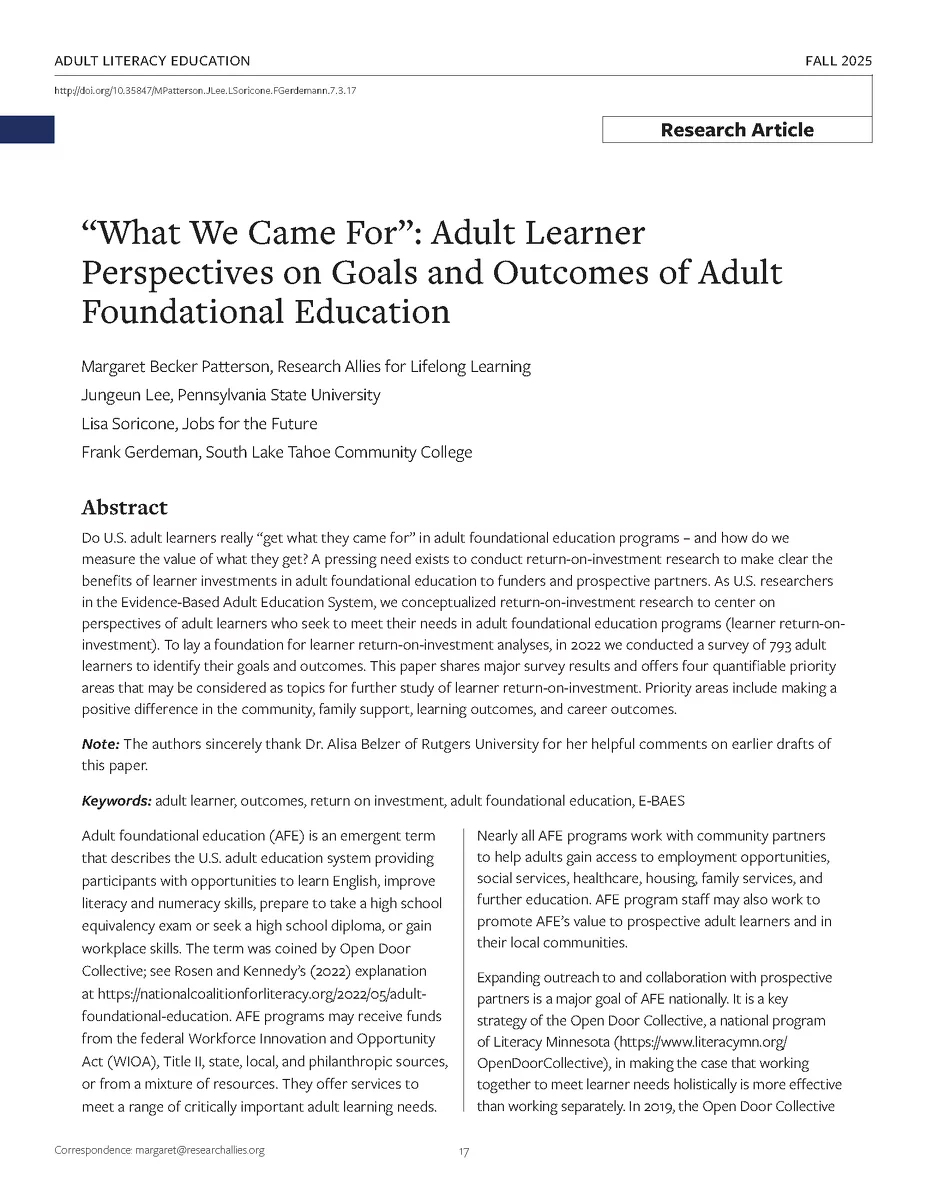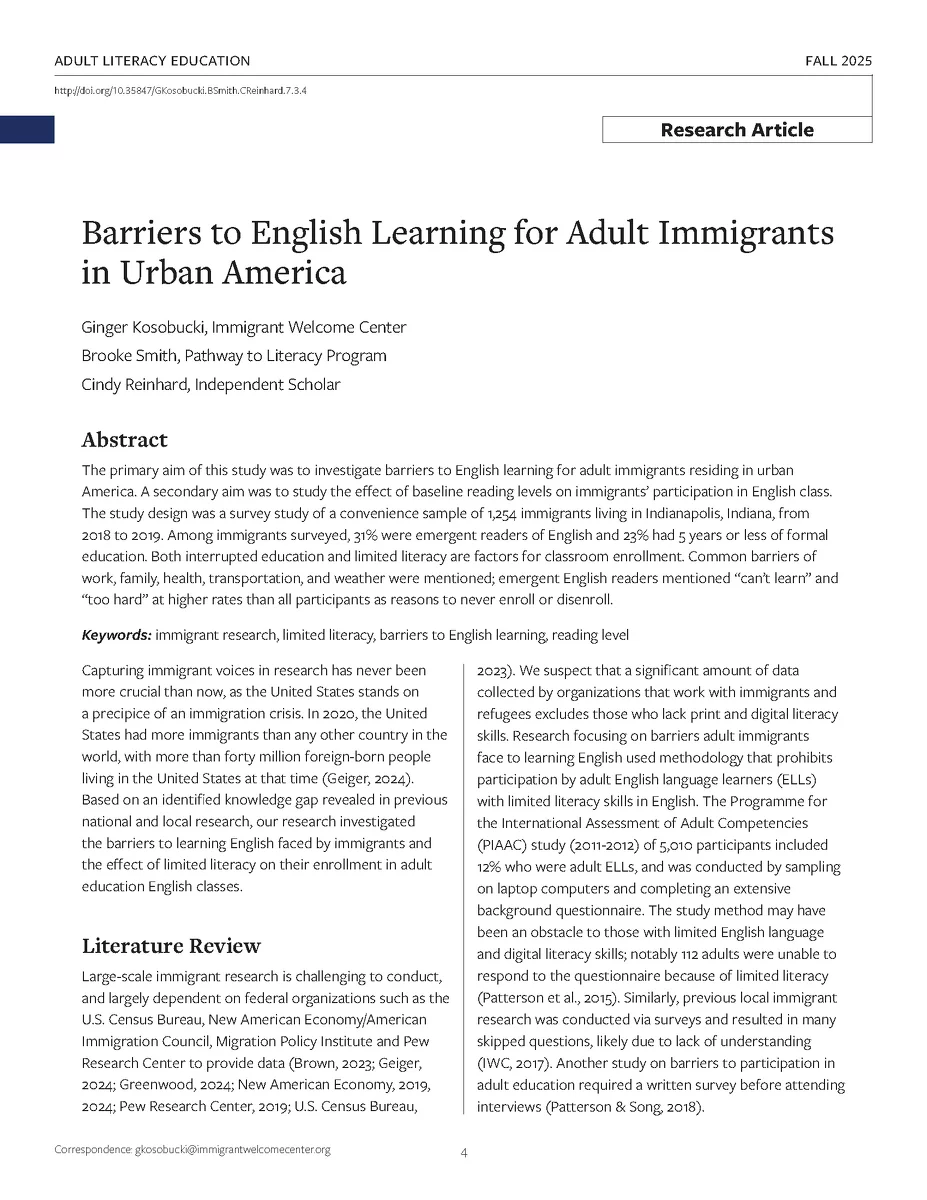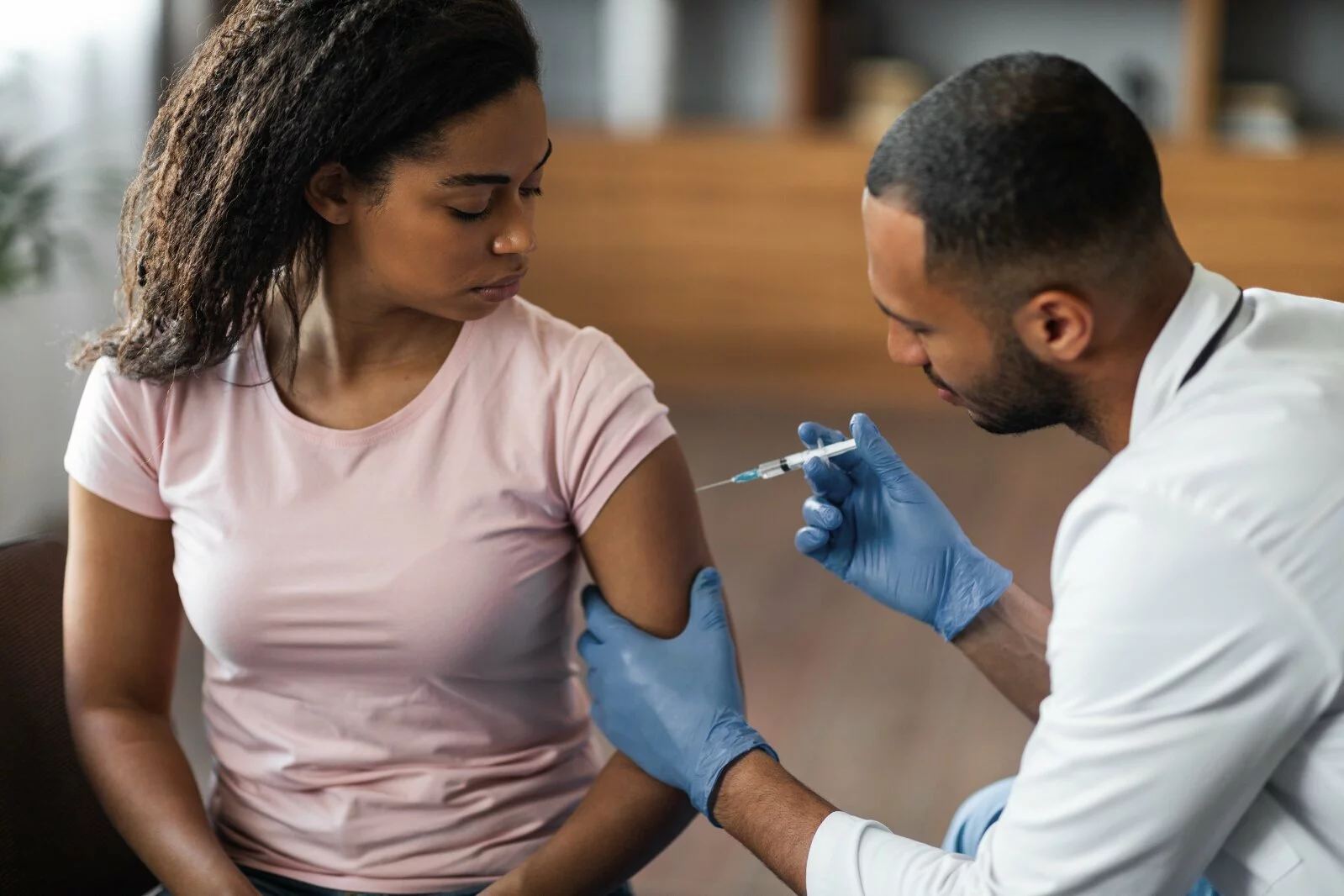Why It’s Time to Rethink ROI in Adult Education
Evidence-Based Adult Education System researchers look to redefine ROI by centering it on the experiences and priorities of the adult learners.
Get the latest news and stories from the adult literacy field.


The economic and social prosperity and stability of our nation—and our local communities—depend on the ability of adults to read, write, do basic math, and think critically.
Evidence-Based Adult Education System researchers look to redefine ROI by centering it on the experiences and priorities of the adult learners.

Find five takeaways about the barriers to English learning for immigrants and the connection to literacy levels.

Author Lynne Weintraub shares advice on how who should prepare for the revised test and what changes to expect.

In the landscape of public health, adult literacy rates have a profound impact on individual and community well-being.

The economic and social prosperity and stability of our nation—and our local communities—depend on the ability of adults to read, write, do basic math, and think critically.

With perseverance and support from his local adult education center, Bushiri Salamu has continued to reach new heights since earning his GED credential in 2019.
